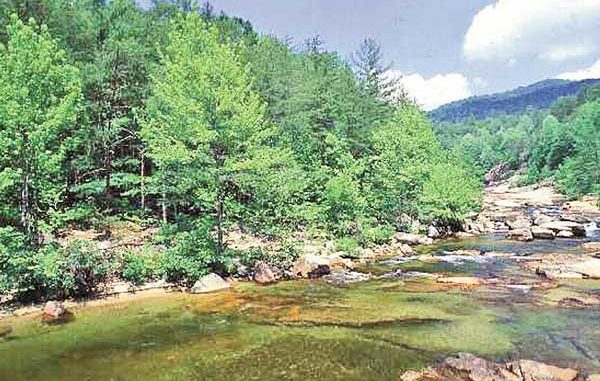
The acquisition of a section of Wilson Creek in Caldwell County is a double bonus for trout fishers. Not only will the state’s popular delayed-harvest program be expanded, the acquisition opens to the public a section of trout waters that was previously private water.
The N.C. Wildlife Resources Commission is purchasing the tract through a partnership with the Foothills Conservancy of North Carolina. The 3½-mile section of Wilson Creek runs from Philips Branch to Lost Cove Creek. The stream officially will join the delayed-harvest program when it is stocked in October.
The primary tributary of Johns River, Wilson Creek rises in Avery County on the south slope of Grandfather Mountain and flows southeast into Caldwell County, where it enters Johns River at the Burke County line. The section from Philips Branch to Brown Mountain Beach Dam is designated as hatchery-supported waters. The numerous deep pools in this section are noted for holding some trophy-sized brown trout.
The upper section of Wilson Creek is on U.S. Forest Service land and is designated as catch-and-release, artificial lures-only waters. The terrain is rough, steep and difficult to access, and the stream size runs from small to medium. Forest Service Road 258 runs parallel to the creek through game lands from Forest Service Road 192, which crosses the stream’s headwaters. To reach the stream, anglers must hike down the sides of a steep gorge. Species include mostly wild rainbow trout with occasional brook and brown trout.
The new delayed-harvest section is between the catch-and-release, artificial lures-only waters and the hatchery-supported section.
To get to the lower section of Wilson Creek, take NC 181 northwest from Morganton. Turn right onto Brown Mountain Beach Rd. and left on Winchester Rd. (SR 1328). This will take you through the Wilson Creek Gorge. The delayed-harvest section is upstream of Phillips Branch.
The delayed-harvest section will initially be stocked with 9,400 rainbow, brook and brown trout. Stockings are scheduled for October and November.
With the addition of Wilson Creek as delayed-harvest trout waters, 21 streams will be in the popular program, spreading from Macon County in the far west to Surry County in the northern Piedmont. The 21 streams, plus 1-acre Trout Lake in Ashe County, are located in 15 counties.
Delayed-harvest streams are generously stocked in March, April and May, with some streams receiving a bonus stocking in October and November. The largest stream in the program is a 5½-mile section of the Tuckasegee River in Jackson County. The most-popular stream in the program, the Tuckasegee is stocked with 48,800 trout per year. Stockings include an equal number of rainbow and brook trout and a smaller number of brown trout. The 8-mile section of Helton Creek in Ashe County gets 20,600 trout per year in March, April and May, with a bonus stocking in July.
The Nantahala River in Macon County receives 18,500 trout per year, all stocked in March, April and May. The East Fork of the French Broad River in Transylvania County is stocked with 17,695 trout in March, April, May and July. North Mills River in Henderson County gets 11,000 trout per year in March, April, May, July, October and November. The remainder receive smaller annual stockings.
The addition of the 3½-mile stretch of Wilson Creek brings the total of delayed-harvest streams to 62½ miles.
Feeling buggy?
July generally marks the beginning of the terrestrial season for trout fishing. Inchworms, beetles, ants and grasshoppers are common fare for trout during the summer. The terrestrial season runs until first frost. Sizes should simulate the actual insect — nothing smaller than a No. 10.
Common dry-fly patterns include Little Yellow Stone (Nos. 16-14), Little Green Stone (16-14), Crème Midge (20-18), Giant Yellow Mayfly (10), and the ubiquitous Blue-Winged Olive (18-16). Attractor patterns include female Adams (16-14), Green Palmer (16-14), Tennessee Wulff (16-14) and the old reliable Elk Hair Caddis (18-14).
With all the spring rains, mountain streams are in better condition than they have been in several years. Summer fishing should be outstanding.




Be the first to comment